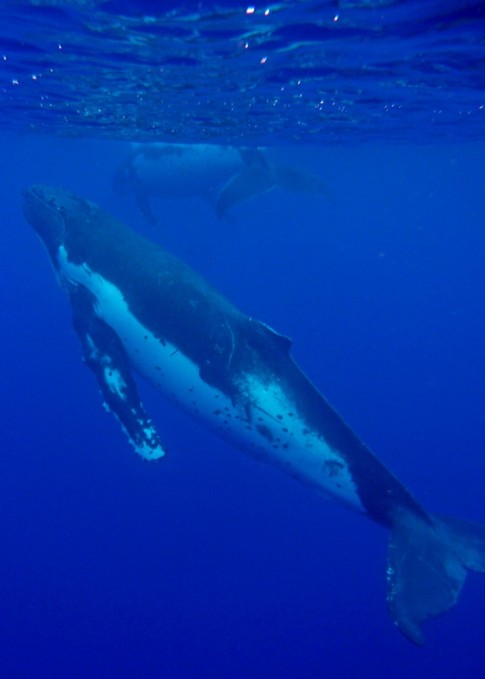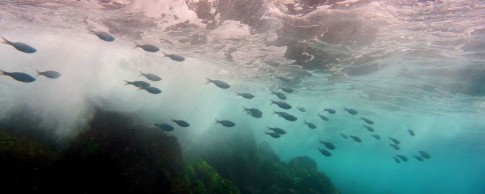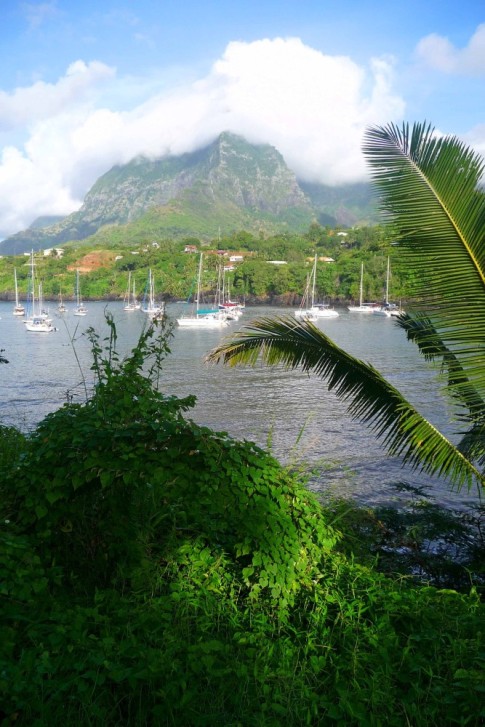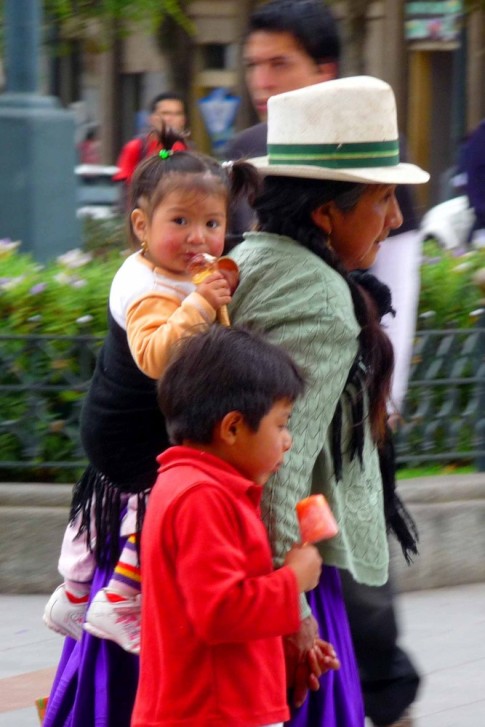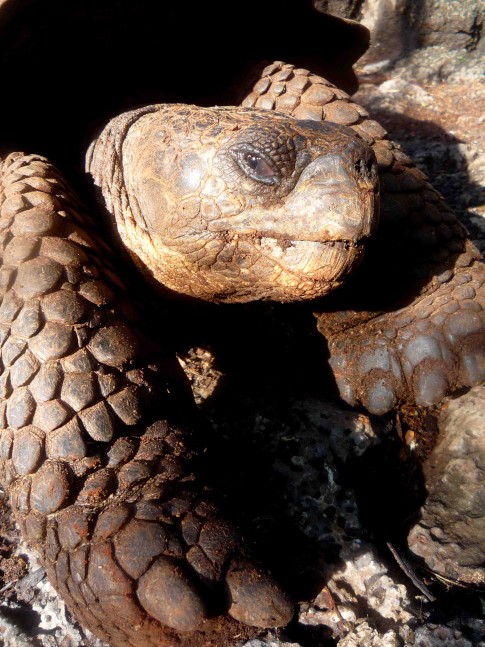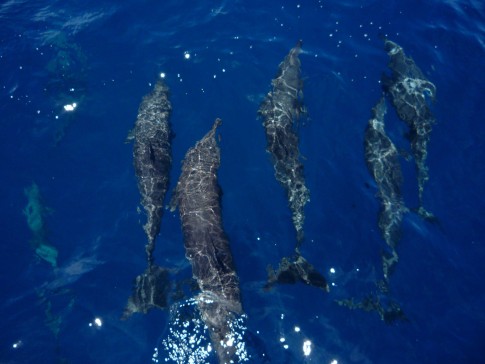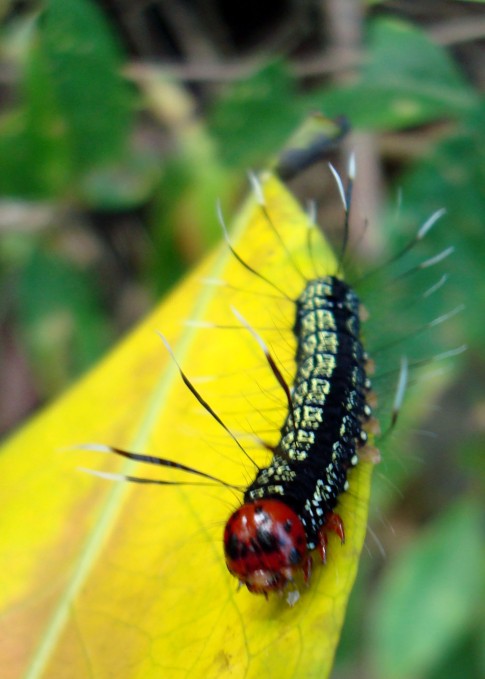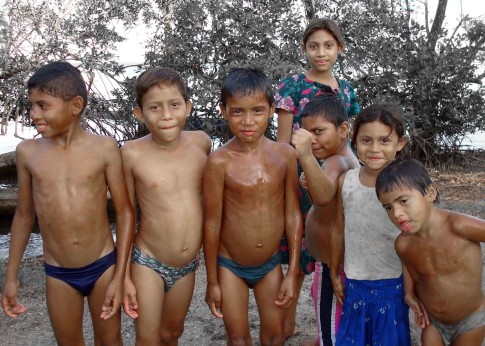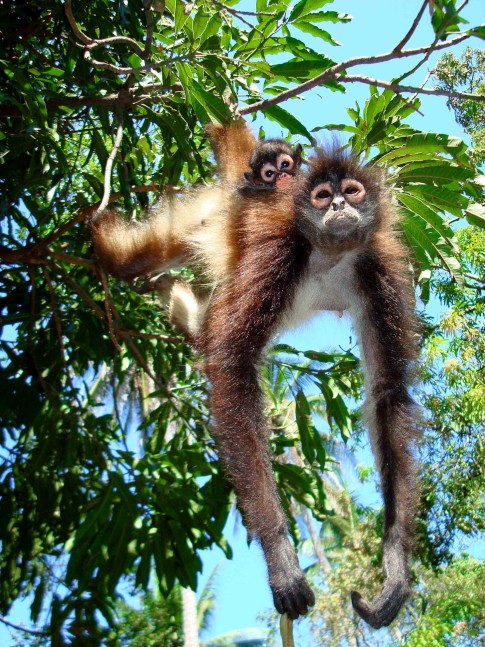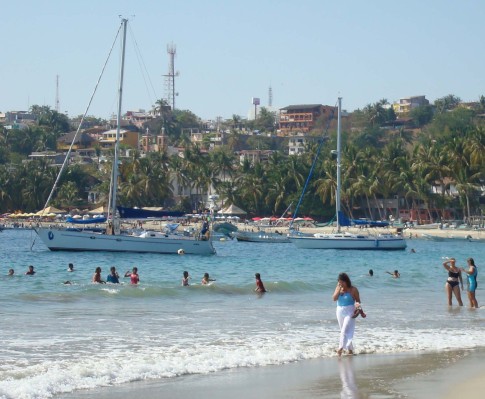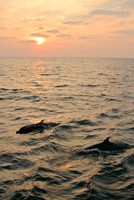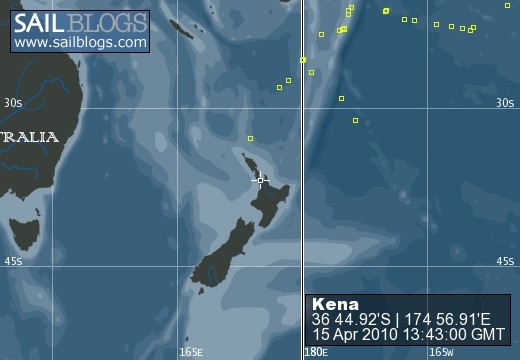
Kena
22 November 2009 | Tutukaka
11 November 2009
10 November 2009
09 November 2009
07 November 2009
07 November 2009
04 November 2009
03 November 2009
01 October 2009
29 September 2009
05 September 2009 | Nuku'alofa
27 August 2009
27 August 2009
23 August 2009
16 August 2009
14 August 2009
12 August 2009
09 August 2009
08 August 2009
08 August 2009
Islas Santa Cruz and Rabida
11 April 2008
Roger
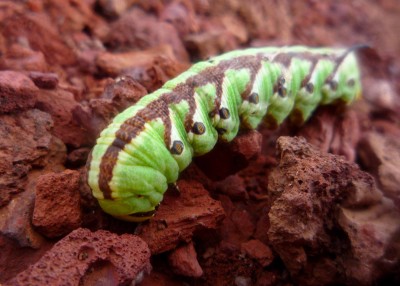
The ship traveled overnight to Puerto Ayora, Isla Santa Cruz where we went ashore to visit the Charles Darwin Research Station. The main work of the station is the giant tortoise breeding program, which has been in progress for around 20 years. Each species of giant tortoise can be identified by the shape of its shell, and the species vary considerably in size. The largest at the station are from Santa Cruz, with a large domed shell, weighing up to 500lbs. The largest in the Galapagos are from Darwin volcano on Espanola island, weighing up to 900lbs. The most famous resident of the station is Lonesome George.
---------
From Wikipedia: Lonesome George is the rarest creature in the world. He is the last known individual of the Pinta Island Tortoise, subspecies Geochelone nigra abingdonii, one of 13 subspecies of Gal�pagos tortoise native to the Gal�pagos Islands.
George was first seen on the island of Pinta on 1 December 1971 by American snail biologist Joseph Vagvolgyi and subsequently tracked down by goat hunters in March 1972. It's thought he was named after the character played by American actor George Gobel. Relocated to the Charles Darwin Research Station, George was penned with two females of a different subspecies, Geochelone nigra becki from Wolf Island, in the hope that his genotype would be retained in the resulting progeny. Unfortunately, these attempts have not been successful to date.
George is estimated to be 60-90 years of age, and is in good health. A prolonged effort to exterminate goats introduced to George's island is now complete and the vegetation of the island is starting to return to what it once was.
---------
We got a good look at George. His shell has the saddle shape, as do most of the subspecies. In fact, Galapago is an old spanish word for saddle, and the islands are named after the shape of the tortoise shells. Some of the people on the tour claimed that their main motivation for coming to the Galapagos was to see Lonesome George, and that many people do so for just that reason.
Another individual, Diego, from Espanola, was brought to the station when there were only around 12 individuals remaining. He has worked hard, and in the 20 years, has increased the population of the Espanola subspecies to over 900.
The highlight of the visit was watching a group of giant tortoises being fed. They lumber over to the flame tree leaves that are placed in the feeding area and start munching loudly. When others arrive, there is a great hissing match until things settle down again. One will try to keep a leaf away from another in a slow motion game of keep-away. Others coming in may be blocked by those already there... no problem, just lumber over the top and clunk down on the heads of those already feeding, provoking another spate of hissing and chomping on shells.
There are displays of land iguanas, bright orange and yellow and very similar to the marine iguanas. Apparently the marine adaptation came from the land version.
The tortoise population was first devastated by passing sailors. It turns out that a giant tortoise can live for up to two years without food or water, using stores held up inside the shell, and slowing their metabolism to a very low level. Sailing ships would stop at the Galapagos islands to stock their holds with tortoises, ensuring they would have fresh meat for up to two years.
The islands themselves are created by volcanoes generated over a hot spot, and as the Nazca plate moves towards mainland south america, new volcanoes arise and form islands. The oldest islands (San Cristobal and Santa Cruz) are only around 3 million years old, while Isabela and Fernandina are only around 600,000 years old. Most of the animals on the islands are thought to have arrived on vegetation rafts, which form on the mainland and have been observed up to 2 kilometers long. The islands are so far from the mainland that only a few species have established themselves. They are also sufficiently far apart to allow separate development on each island. With so few species, and with no predators, the effects of evolution are much easier to observe. The famous Darwin finches, 13 species, have evolved into different niches with the most obvious differences being their overall size and the shape of their beaks. It was these clear differences on different islands and in different niches, that made the process of natural selection so clear to Darwin...it�s not that evolution proceeds any differently here.
Back on the boat by midday, we set off for Isla Rabida. On the way, we had a great view of many of the islands in the distance... Santa Cruz, Floreana, four brothers, No Name rock, Pinzon (finch), Isabela, Rabida, Bartholome, Santiago, Daphne Major, Daphne Minor, and several smaller islands.
Rabida is entirely red, with red sand, and red rocks. Some of the fish we saw while snorkeling were red to blend with the rocks. The main event was a guided nature walk on the island. As the afternoon progressed, big rainstorms built up and we were treated to a wonderful wet sunset.
---------
From Wikipedia: Lonesome George is the rarest creature in the world. He is the last known individual of the Pinta Island Tortoise, subspecies Geochelone nigra abingdonii, one of 13 subspecies of Gal�pagos tortoise native to the Gal�pagos Islands.
George was first seen on the island of Pinta on 1 December 1971 by American snail biologist Joseph Vagvolgyi and subsequently tracked down by goat hunters in March 1972. It's thought he was named after the character played by American actor George Gobel. Relocated to the Charles Darwin Research Station, George was penned with two females of a different subspecies, Geochelone nigra becki from Wolf Island, in the hope that his genotype would be retained in the resulting progeny. Unfortunately, these attempts have not been successful to date.
George is estimated to be 60-90 years of age, and is in good health. A prolonged effort to exterminate goats introduced to George's island is now complete and the vegetation of the island is starting to return to what it once was.
---------
We got a good look at George. His shell has the saddle shape, as do most of the subspecies. In fact, Galapago is an old spanish word for saddle, and the islands are named after the shape of the tortoise shells. Some of the people on the tour claimed that their main motivation for coming to the Galapagos was to see Lonesome George, and that many people do so for just that reason.
Another individual, Diego, from Espanola, was brought to the station when there were only around 12 individuals remaining. He has worked hard, and in the 20 years, has increased the population of the Espanola subspecies to over 900.
The highlight of the visit was watching a group of giant tortoises being fed. They lumber over to the flame tree leaves that are placed in the feeding area and start munching loudly. When others arrive, there is a great hissing match until things settle down again. One will try to keep a leaf away from another in a slow motion game of keep-away. Others coming in may be blocked by those already there... no problem, just lumber over the top and clunk down on the heads of those already feeding, provoking another spate of hissing and chomping on shells.
There are displays of land iguanas, bright orange and yellow and very similar to the marine iguanas. Apparently the marine adaptation came from the land version.
The tortoise population was first devastated by passing sailors. It turns out that a giant tortoise can live for up to two years without food or water, using stores held up inside the shell, and slowing their metabolism to a very low level. Sailing ships would stop at the Galapagos islands to stock their holds with tortoises, ensuring they would have fresh meat for up to two years.
The islands themselves are created by volcanoes generated over a hot spot, and as the Nazca plate moves towards mainland south america, new volcanoes arise and form islands. The oldest islands (San Cristobal and Santa Cruz) are only around 3 million years old, while Isabela and Fernandina are only around 600,000 years old. Most of the animals on the islands are thought to have arrived on vegetation rafts, which form on the mainland and have been observed up to 2 kilometers long. The islands are so far from the mainland that only a few species have established themselves. They are also sufficiently far apart to allow separate development on each island. With so few species, and with no predators, the effects of evolution are much easier to observe. The famous Darwin finches, 13 species, have evolved into different niches with the most obvious differences being their overall size and the shape of their beaks. It was these clear differences on different islands and in different niches, that made the process of natural selection so clear to Darwin...it�s not that evolution proceeds any differently here.
Back on the boat by midday, we set off for Isla Rabida. On the way, we had a great view of many of the islands in the distance... Santa Cruz, Floreana, four brothers, No Name rock, Pinzon (finch), Isabela, Rabida, Bartholome, Santiago, Daphne Major, Daphne Minor, and several smaller islands.
Rabida is entirely red, with red sand, and red rocks. Some of the fish we saw while snorkeling were red to blend with the rocks. The main event was a guided nature walk on the island. As the afternoon progressed, big rainstorms built up and we were treated to a wonderful wet sunset.
Comments
| Vessel Name: | Kena |
| Vessel Make/Model: | Ganley Pacemaker 40 |
| Hailing Port: | Tutukaka, New Zealand |
| Crew: | Roger, Sally, Tane, Hunters all |
| About: | The Hunter family: Roger, originally from Tutukaka, New Zealand Sally, from Tasmania, Australia and Tane is from New Mexico. |
| Extra: | This leg of the trip is from Puerto Lucia, Ecuador to New Zealand. |
Kena's Photos - Main
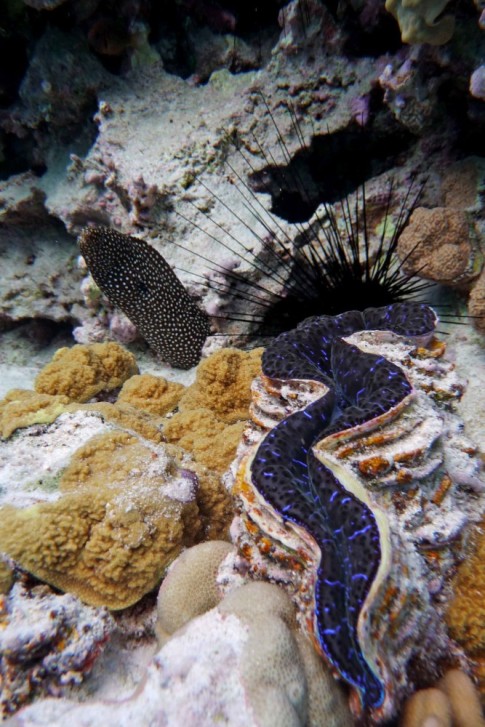 |
A few picks of Roratonga, where we picked up Tomas, and of the incredible Beveridge Reef
20 Photos
Created 1 September 2009
|
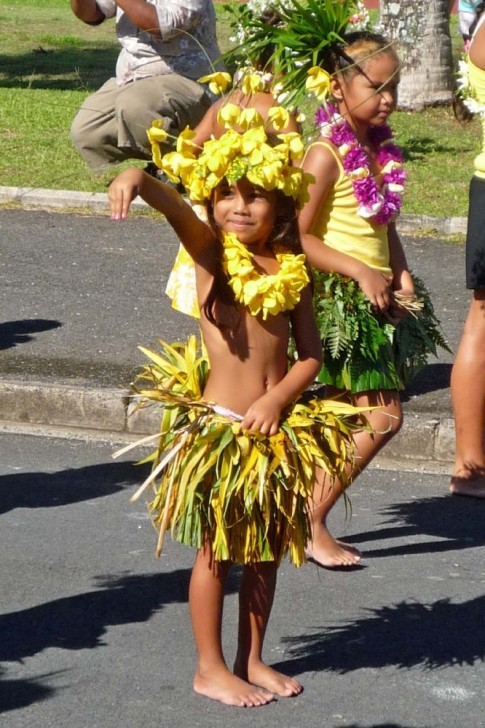 |
Our adventure in the islands of Tahaa and Raiatea in The Society Islands
18 Photos
Created 5 August 2009
|
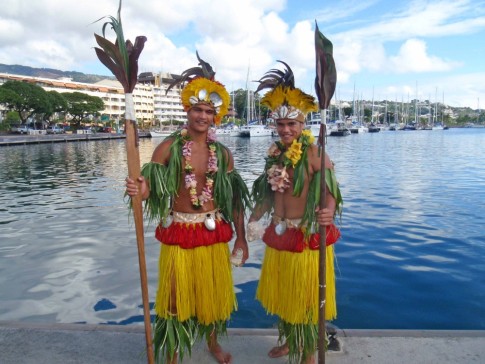 |
The Sailing Rendezvous in Tahiti and Moorea, plus a little of Huahine
35 Photos
Created 5 August 2009
|
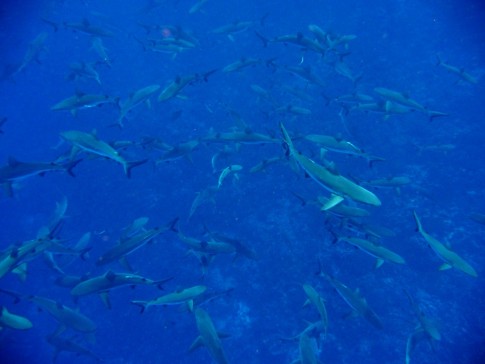 |
Our journey through the coral atolls of the Tuamotus in French Polynesia
65 Photos
Created 19 June 2009
|
S/V Kena
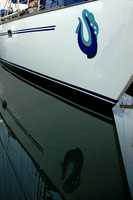
Who: Roger, Sally, Tane, Hunters all
Port: Tutukaka, New Zealand
